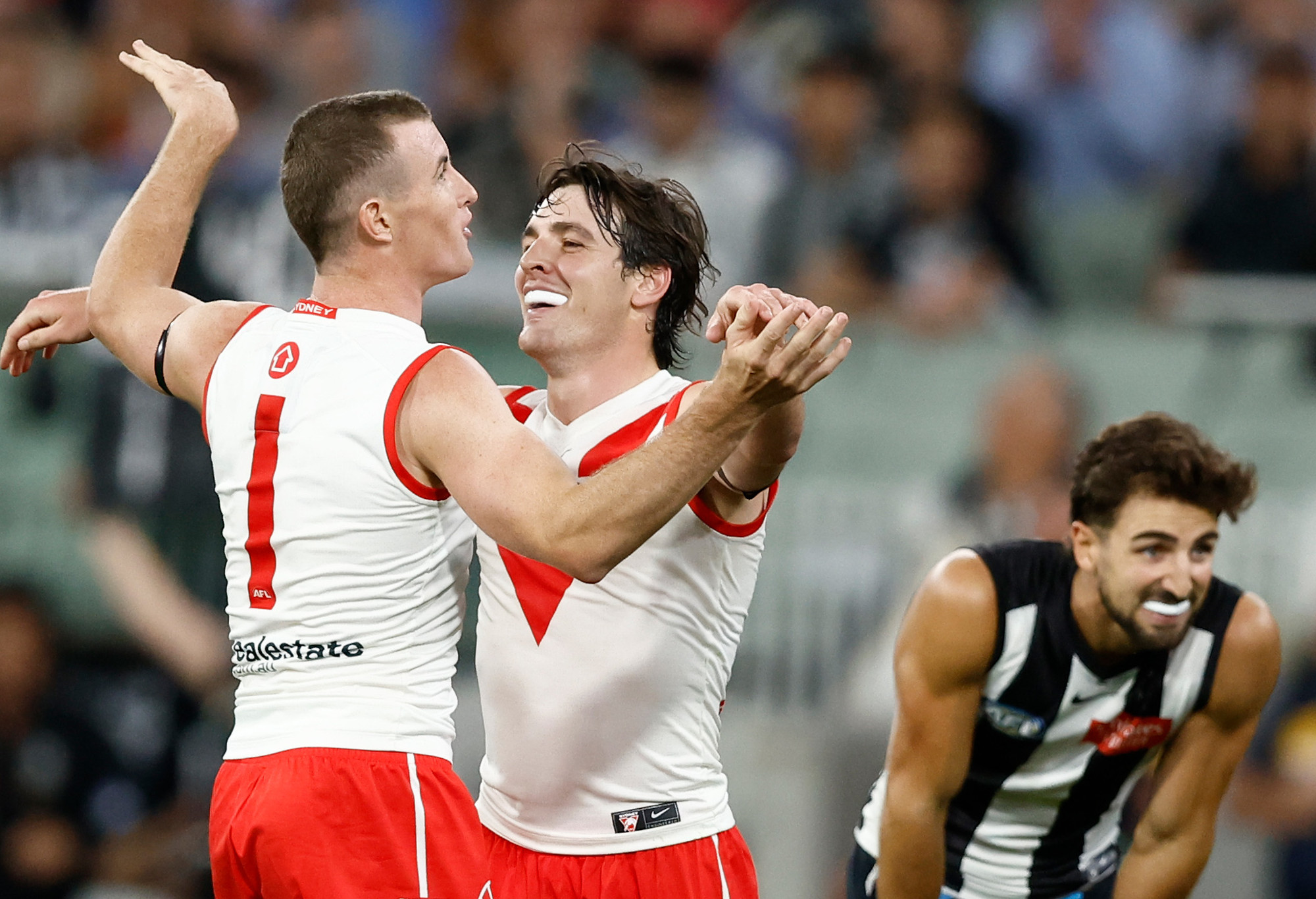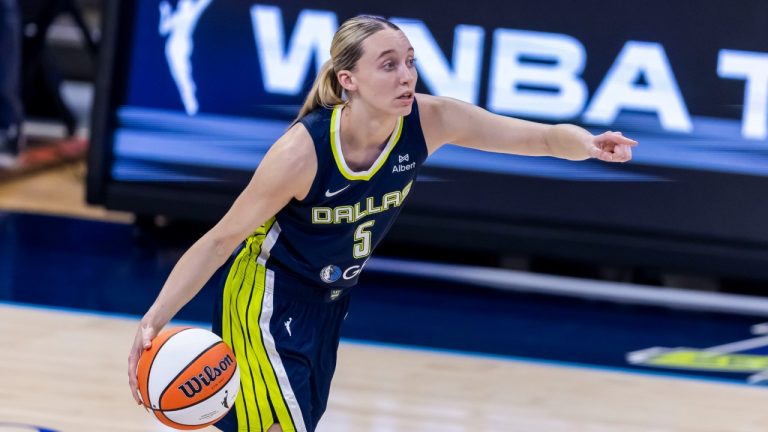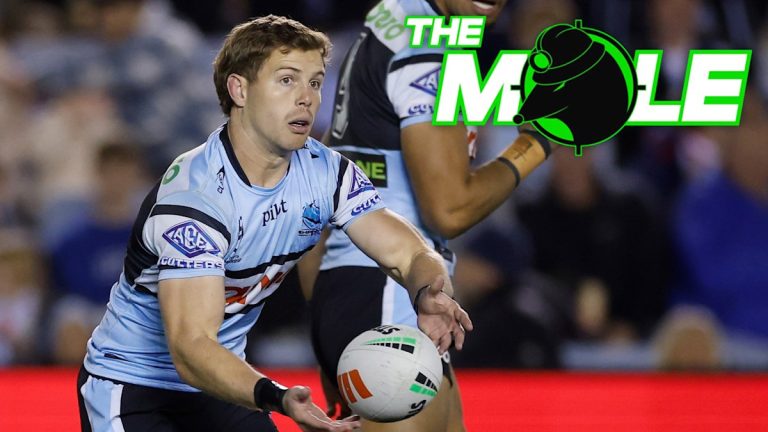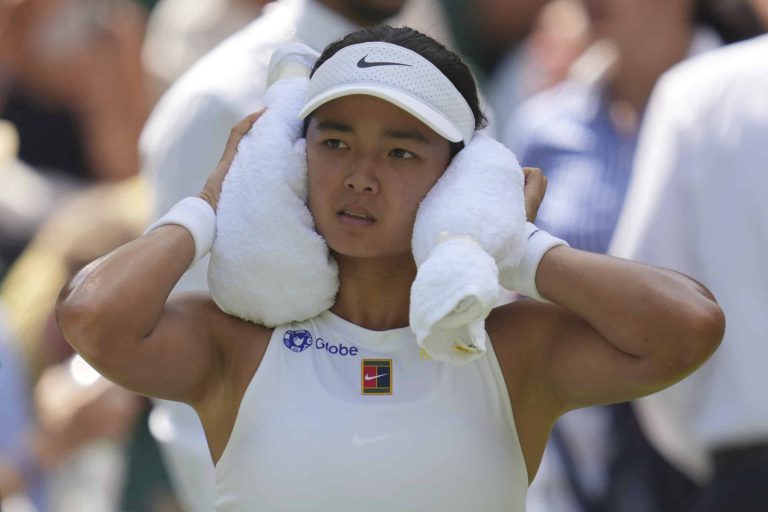It’s been a rough start for Dean Cox at the Swans as his team keeps looking further and further away from even being worthy of a home final in 2025.
Taking over one of the most consistently relevant clubs has its challenges, particularly after the soul-destroying Grand Final loss in 2024, replacing one of the club’s all-time great coaches.
He rapidly went from heir apparent rejecting other opportunities, to the main guy – whether he was fully prepared or not.
There’s little doubt that how last season ended for Sydney has left a mark on a group that was seemingly building for repeated attempts at winning the grand prize. Of course, the second half of the season as a whole was quite eye-opening. Here, we maintained the belief. Many never believed in the group. As the final siren sounded and the Lions’ players celebrated, the latter group felt justified.
Heading into the season, the Swans were a popular slider in the predictions we all tend to make. Still, finals felt realistic. Errol Gulden went down and certainly from a personal standpoint, September footy felt a bridge way too far.

Chad Warner and Errol Gulden celebrate a goal. (Photo by Michael Willson/AFL Photos via Getty Images)
Injuries have been an issue from the outset for Cox to deal with, navigating his new job with a scarred playing group missing a bunch of key players.
Gulden will end up missing more than half the season, skipper Callum Mills nearly the first two months. Another couple of months for Tom Papley, similar timelines overall for versatile and reliable defenders Harry Cunningham and Robbie Fox, although the preference would have as depth.
Joel Amartey’s gone down for at least a month with a hamstring, Taylor Adams in the same ballpark with the same issue and Logan McDonald’s return has had to wait for over a month.
All of that, it’s a big issue and can be offered up as vague reasoning for Sydney’s disappointing start to the season, which has them with two wins from five games.
It hasn’t been an easy run either for them, the scores had them close to Hawthorn and Brisbane in the opening fortnight, yet the actual gameplay felt more favoured to the eventual victors. Largely, the Swans haven’t played great footy.
And yes, the absences of key personnel doesn’t help, but it feels like the coach hasn’t formulated his own identity, and it’s left the Swans treading water in the hope of winning enough games to get by until best 23 guys return.
John Longmire was obviously a wonderful coach for the Swans and led them to the very last game of the season in his final year in charge, but even those who believed in the group could see flaws in the way the Swans played.
Offensively, it was exciting. Fast ball movement, controlling space and locking the ball into the forward half, that was the key to victory. The Swans weren’t exceptional in any one area except they were the best team in the league at scoring from turnover, which largely came as a result of that forward half spatial dominance.
It made the jobs of the defenders pretty easy. They strangled the opposition.
Then in the second half of the year, they tried to keep playing the same way, but the opposition starting setting up well on the defensive side of contests. The Swans loved to move the ball quickly when it was time to attack and take long shots on goal. They were among the league’s most accurate teams, funnily enough.
After Round 16, Sydney was 13-1. They averaged nearly 104 points per game and conceded just 69.9. It’s easy to say in hindsight, but it’s worth noting five of those 14 games were played against eventual finalists.
In their last dozen games, the Swans averaged 18 fewer points and conceded 18 more – their percentage in that time was below 100.
Of course, we’re focusing on the Swans in 2025 and Cox’s first year in charge, but the relevance in reviewing those numbers and tactics from Longmire’s farewell season is that this year, the Swans are sort of just regurgitating last year’s failed style, without the forward half strangling and ability to score from turnover.

John Longmire (Photo by Dylan Burns/AFL Photos via Getty Images)
Through five games, the Swans are below league average for scores from turnover. Their pressure overall is down, their forward pressure in particular is lagging considerably too.
Last year’s they were at 52 per cent accuracy, this year, it’s 48. The final area they were really good was their ability to score when inside 50, scoring 47.8 per cent of the time, ranked second and an indicator of just how well that offensive ball movement functioned, with Sydney players finding plenty of space inside 50.
This year, in the small sample size and against a lot of good teams, they’re down to 41.7 per cent – only Carlton and Melbourne are worse. Yes, the Eagles are getting more scoring shots per inside 50. North Melbourne and Richmond are above league average.
So at the moment, we’re watching a Swans team that sort of looks like it’s trying to use similar tactics to previous seasons, but not as effective on offence. Defensively, the numbers look pretty similar to last season, just that the drop-off in pressure up the ground leaves them more vulnerable at the back.
The obvious fingerprints on Cox’s Swans at the start of the season initially were playing Tom McCartin forward and trying to use the height of Nick Blakey to make him more accountable – he said as much in a pre-match interview.
For the sake of Swans fans, McCartin’s return to defence, which came out of necessity due to Lewis Melican’s absence, should be permanent, as the forward craft just wasn’t there. And Blakey, he’s arguably the most exciting rebounder in the league.
It’s hard to believe that a midfield that features Issac Heeney and Chad Warner lacks the same dynamism it hard last year, but with Warner spending more time forward and Heeney being asked to do more work all-round, it just makes that absence of Gulden as an option to roll through there that much more obvious.
Things gets a little murky from here, particularly with Amartey’s absence. Peter Ladhams isn’t a natural key forward, Logan McDonald needs to find his feet, they might’ve tried to throw Robbie Fox forward but he’s not available.

Isaac Heeney takes a contested mark. (Photo by Mark Metcalfe/AFL Photos/Getty Images)
Heeney’s an obvious one to spend more time forward and Warner more time in the middle, but Cox doesn’t have any other dynamic options to put through the middle if he does.
Maybe it is McCartin again, to the chagrin of fans. Perhaps it’s Joel Hamling.
On the other side of things, Cox appears keen to start trying to develop direct and clean ball movement from half-back, with a lot of trust in Riley Bice in that role. Matt Roberts is more of a precise type back there and Blakey’s born to run – it’s why we’ve seen Oli Florent take a much more advanced role, more as an offensive wingman to maximise the end product.
Maybe that’s the Cox style of play. Give time to the likes of Caiden Cleary as a high half-forward you can trust to tackle, take the vest off Angus Sheldrick and let him give James Rowbottom the tackling support in the middle, and then don’t squeeze as high up the ground, but rather use the half-back line to forgo the short, chip kicks, and play quick on the counter.
Without strong targets up forward and the ground-level play lacking a bit, keep expecting goals from players higher up the ground.
Without doubt, the Swans have still shown a proclivity to play offensively scintillating footy in little bursts that prove that flashy upside is still there, even without all the cattle available. It’s far from a doom-and-gloom scenario and let’s face it, Cox is only five games into his official coaching career.
Just like anyone, he needs time to develop and truthfully, probably an off-season or two to really make his mark on a talented squad that needs a little bit of turnover and sharpening up, but is still set up well for the long-term.
For the present though, it’s time for Cox to just back himself all the way in and seek to further remove his team from the performance of the season just gone.
It isn’t easy to take over a scarred, somewhat depleted team with expectation. A slow start isn’t a shock given the circumstances.
But it’s time for us to see what a Dean Cox version of the Sydney Swans looks like in the coming weeks, rather than a quasi-bastardised version of John Longmire’s Swans, without mass tactical changes.







